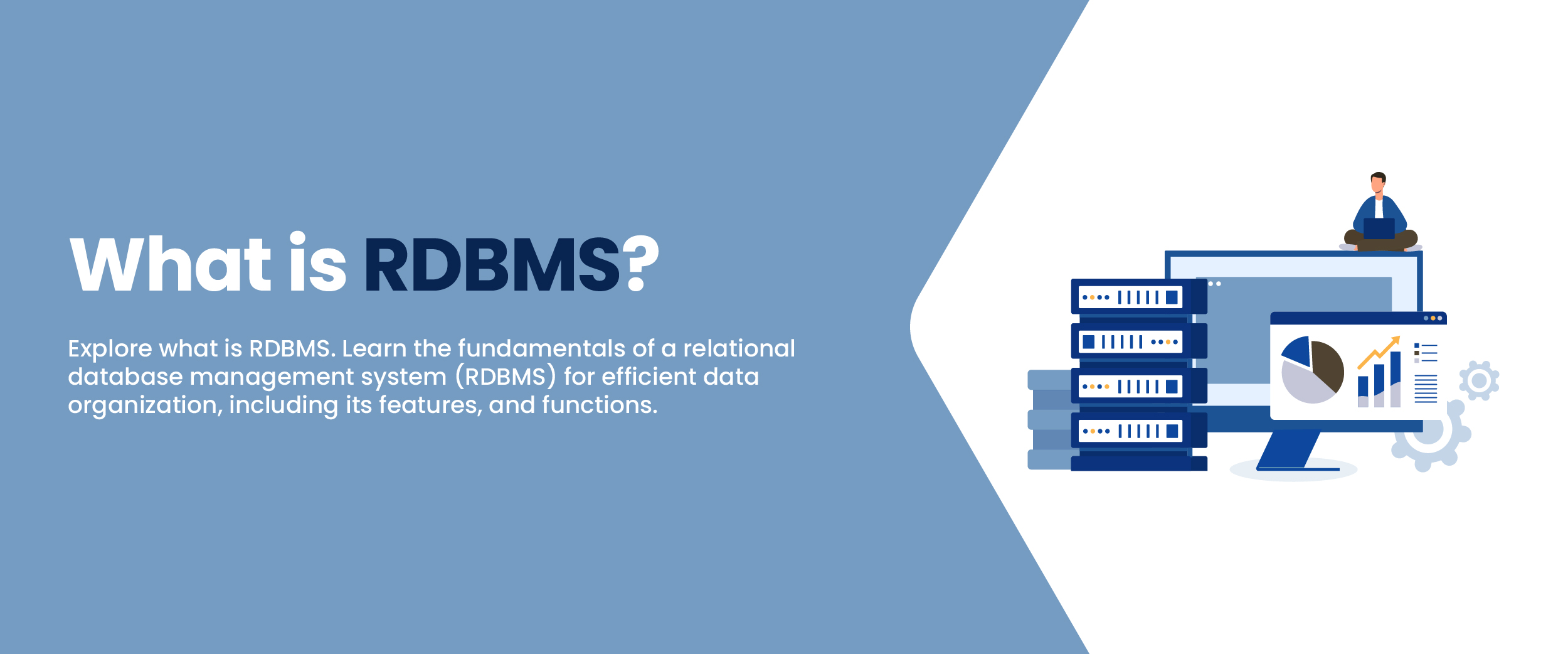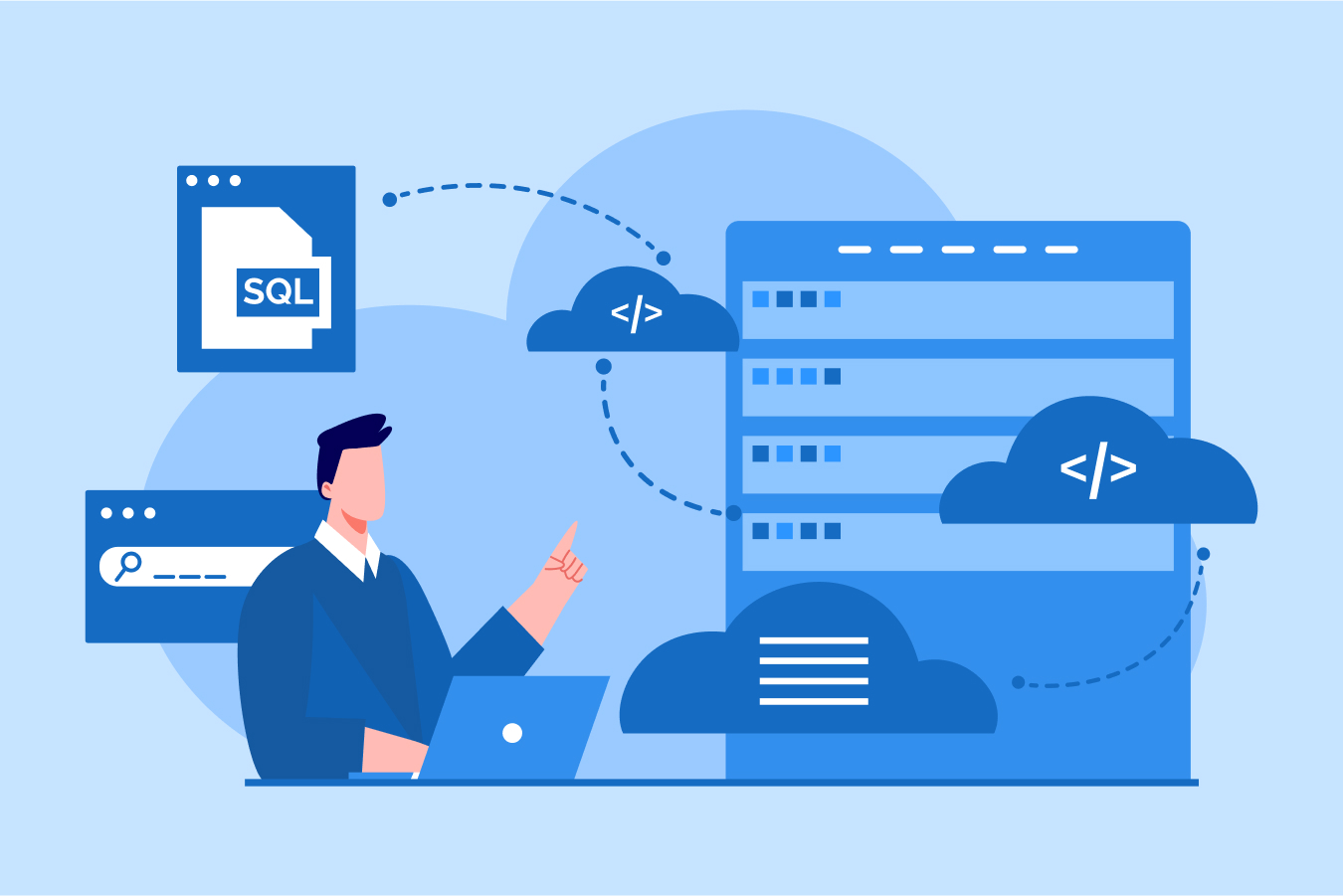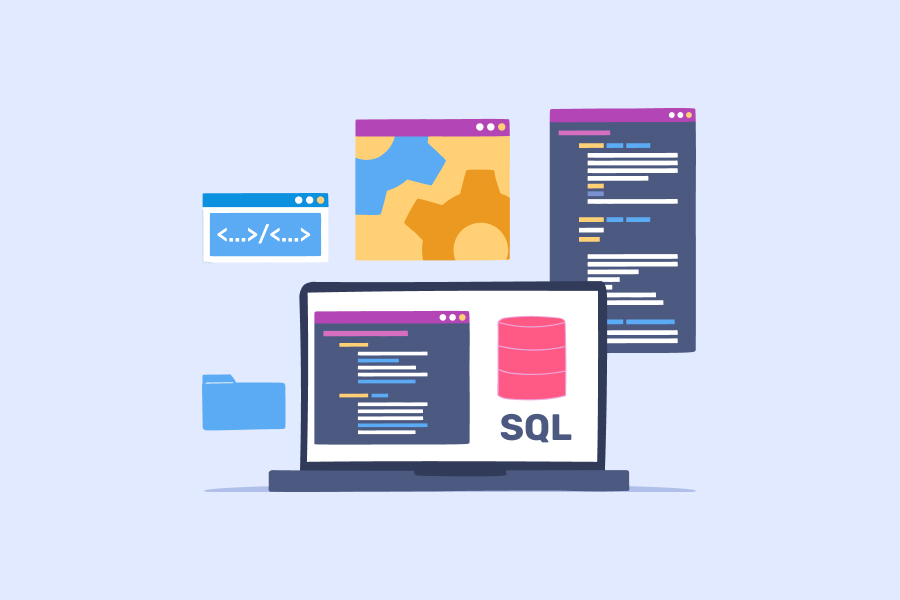What is RDBMS? – Features, Concepts, Applications, & More
The 1970s proved to be the turning point in the history of databases as the relational database model was developed. Since then several relational database management systems have come into use. In this blog, we will discuss, what is RDBMS, its history, features, basic concepts, how it works, its advantages along the differences between DBMS and RDBMS.
What is Relational Database?
A relational database is where information or data is stored in one or more tables combining rows and columns. It organizes data into logical connections or relationships for the user to understand how various data structures relate to each other. In a relational database model, two tables are related using a common attribute.
What is RDBMS?
According to Oracle’s RDBMS definition, a relational database management system is software that allows users to store, manage, query, and retrieve data that is stored in a relational database. Data in RDBMS is stored in tables with rows and columns. Modern database systems such as MySQL, SQL Server, Oracle, etc. are all based on RDBMS. Most relational database management systems use SQL or Structured Query language to access a database.
To get a better understanding of various functions of SQL, an online SQL course can be beneficial.
Evolution of RDBMS
The RDBMS soon became vital for the distributed architecture of client-server computing, connecting stand-alone personal computers to files and database servers. With the rise in the use of client-server computing, several relational database management systems arose such as Oracle, Ingres, Informix, Sybase, etc.
Eventually, IBM’s DB2, Oracle, and Microsoft’s SQL Server came to dominate the commercial scene. But by the end of the twentieth century, low-cost, open-source versions of relational database management systems came into existence, especially in web applications, and became a norm.


Features of RDBMS
Here are some of the basic features of a relational database management system.
- It offers functions related to creating, reading, updating, and deleting operations to be performed on data.
- It provides data dictionaries and metadata collections which help in data handling.
- Another common feature is data storage management. The data objects range from binary large objects to strings to stored procedures.
- SQL is the most commonly used language to access RDBMS. With certain extensions, it can be used with common programming languages such as Common Business-oriented Language, Java, etc.
- Multiple users can concurrently access a database without the data integrity being compromised.
- It provides security management since it is used mostly in enterprises.
- It supports the work of database administrators who must manage and monitor database activity. With the help of utilities, data loading, and database backup are automated.
- It manages log files that track system performance based on selected operational parameters.
- It provides a graphical interface that helps database administrators visualize database activity.
RDBMS Concepts
To understand the workings of a relational database management system, it is important to know its basic concepts. Some of the essential RDBMS concepts are as follows.
- Table- In an RDBMS, data is stored in tables. A table is a collection of related data entries and consists of several columns and rows.
- Field- A field is a column where one enters specific information about the records in a table.
- Record or Row- A record or a row in a table consists of an individual entry. It is a single row of data.
- Column- It is a vertical entity in a table that has information related to a specific field in a table.
- NULL value- A NULL value in a table is a field with no value or is blank. It is different from zero as it contains spaces. It is left blank during record creation.
- SQL Constraints- There are rules enforced on data columns that limit the type of data that can be entered in a table. Constraints are either column level or table level. The former are applied to columns whereas the latter are applied to the entire table. Some constraints used in SQL are NOT NULL, DEFAULT, UNIQUE key, PRIMARY key, FOREIGN key, CHECK, and INDEX.
- Data Integrity- RDBMS offers certain categories of data integrity. They are entity integrity, domain integrity, referential integrity, and user-defined integrity.
- Entity integrity ensures that there are no duplicate rows in a table.
- Domain integrity enforces valid entry by limiting the types, ranges, and format of values in a table.
- Referential integrity ensures the rows that are used by other records cannot be deleted.
- User-defined integrity enforces specific business rules.
- Database Normalization- It is the process of efficiently organizing data in a database. The process helps in eliminating redundant data and ensuring that the data dependencies make sense. Normalization guidelines are divided into normal forms that help create a good database structure.
How does RDBMS Work?
Every system has several tables with a unique primary key to identify each table. RDBMS structure works by arranging every table into rows and columns.
- Rows hold unique records, while the columns contain data attributes.
- SQL queries are used to retrieve the data in the tables and work on it accordingly.
- All the tables in a relational database management system are connected based on pre-existing relationships.
- A record in a table can be related to a single record in a different table or several records in different tables.
- Several records of a table can be related to multiple records in a different table.
- To facilitate these connections, RDBMS ensures that each table has a primary value with no null values.
- The foreign key is used to relate two tables which are preserved in one table and refer to the primary key in the other table and no column has a null value.
Advantages of RDBMS
A relational database management system has several advantages. Here are some of them.
- User-friendly- Data in an RDBMS is stored in a user-friendly table format that makes it easy to access, retrieve, and manipulate data. The user can use query operations with ease.
- Easy Maintenance- The database administrators can easily maintain, update, and control the data in the database. Data back-up is easy and tasks can be automated using the automation tools of RDBMS.
- Flexibility- Data can be updated using the main table. The changes will be saved across files.
- Privileges- Database administrators can control activities over databases. They can grant user-specific access or restrict the access of certain users.
- Data Safety- RDBMS ensures data security by using multiple security layers. Authorization codes keep the data safe during program crashes.
- Fault Tolerance- RDBMS provides fault tolerance by replicating the database and providing concurrent access. It is helpful during sudden power failures, accidental shutdowns, etc.
- Scalability- The indexes in an RDBMS ensure the handling of huge quantities of data uniformly by sorting the data quickly and efficiently.
DBMS vs. RDBMS – A Comparative Guide
Though we have discussed RDBMS meaning, there is often confusion between database management systems and relational database management systems. Here are some basic differences between dbms and rdbms.
| Parameter | DBMS | RDBMS |
| Description | It is a database management system. | It is a relational database management system. |
| Data | Datasets are organized and structured in databases through various approaches. | It supports relational data models that establish relationships between data elements in tables. |
| Data Volume | It is used to handle low data volumes. | It is used to handle large data volumes. |
| Features Support | Does not support features such as database normalization, referential integrity, etc. | It uses normalization, primary and foreign keys, integrity checks, etc. |
| Users | It allows only one user at a time. | It can operate with multiple users. |
| Database Structure | It stores data in a hierarchical form. | It stores data in tables with columns having data attributes and rows with corresponding values. |
| ACID Implementation | It does not use the ACID or atomicity, consistency, isolation, or durability model to store data. | It implements ACID to ensure data consistency. |
| Distributed Databases | It does not support distributed databases. | It offers complete support for distributed databases. |
| Use | It is used for smaller, purpose-specific applications. | It is used for enterprise-class applications. |
| Speed | Data retrieval is slow, especially in the case of complex and extensive data. | Data retrieval is quick due to the relational approach of RDBMS. MySQL is one of the fastest RDBMS. |
Conclusion
A relational database management system ensures efficiency in the creation, storage, and manipulation of data. We have learned what is RDBMS, its history, features, basic concepts, how it works, as well as its advantages. The difference between DBMS and RDBMS highlights the importance of relational database management systems over others and establishes its prominence.







